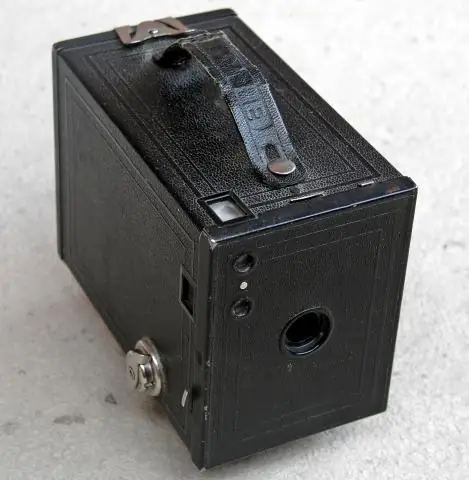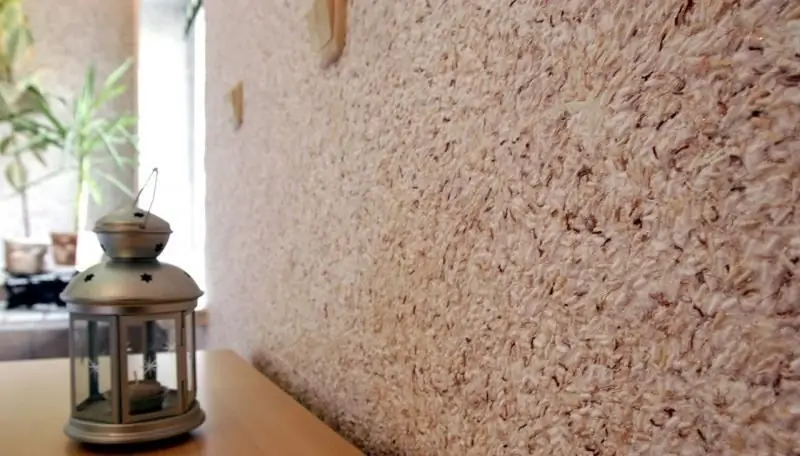
Table of contents:
- Author Bailey Albertson [email protected].
- Public 2024-01-17 22:26.
- Last modified 2025-06-01 07:32.
Raspberry Eurasia is one of the best remontant varieties

Remaining raspberries are becoming more widespread in personal plots. One of the most successful varieties, adapted specifically for the climatic zones of the former Soviet Union, as the name says - Eurasia. A description of the rules of agricultural technology will help even a novice gardener to grow an excellent harvest.
Content
- 1 What is remontant raspberry
-
2 Description of the raspberry variety Eurasia
- 2.1 Video: raspberry Eurasia
- 2.2 Table: advantages and disadvantages of the variety
-
3 Landing features
- 3.1 Soil preparation
- 3.2 Selection of planting material
- 3.3 Landing
-
4 Care
- 4.1 Top dressing
- 4.2 Cropping
- 4.3 Watering
- 4.4 Preparing for winter
-
5 Diseases and pests of raspberry Eurasia
- 5.1 Table: prevention and treatment of diseases
- 5.2 Photo gallery: raspberry pests and diseases
- 5.3 Video: preparing Bordeaux liquid
- 6 Harvesting
- 7 Reviews of gardeners
What is remontant raspberry
In remontant raspberries, berries are formed not only on two-year-old shoots, but also on annual ones, which allows you to get a crop twice a season. Experts advise to grow remontant raspberries in a one-year cycle, i.e. in autumn, after harvesting, mow all the stems at the root. This protects the plantings from various diseases and pests, simplifies maintenance and guarantees a high yield for the next year.

Repaired raspberry bears fruit on annual shoots
Description of the raspberry variety Eurasia
One of the most productive varieties of remontant raspberries is Eurasia. Bred by Soviet breeders, it is distinguished by rather early fruiting periods, drought resistance, which allows full harvesting in various climatic zones of our country.
Annual shoots are burgundy, covered with thorns - densely at the base, less often to the top. Reach a height of 1.4-1.6 m. Two-year-old shoots are dark brown, covered with a waxy coating. The shrub is of the standard type (tree-like). Leaves are dark green, carved, decorative. Berries are conical in shape, burgundy-raspberry color, do not have a strong aroma, sweet and sour. Their weight is from 3.6 g to 5 g.

Raspberry Eurasia is decorative
Video: raspberry Eurasia
Table: advantages and disadvantages of the variety
| pros | Minuses |
| Drought-resistant variety. | The taste of berries is not sweet enough. |
| Fruiting ends in mid-September (this is a feature of this variety, specially developed for growing in different climatic zones of our country), which allows you to grow raspberries in areas with an insufficiently favorable climate. | |
| The berries tolerate transportation well, retain their presentation for a long time. |
Landing features
Raspberries are planted in late September - early October. This allows the plants to devote energy to rooting, rather than developing new leaves and shoots. In areas with early frosts, planting is carried out two weeks earlier. Spring planting is also allowed, before the beginning of the growing season, but after all frosts (end of April).
Soil preparation
A well-lit area, protected from drafts, is chosen, it is advisable to plant it along the fence (at a distance of about 1 m from it). This will create a favorable microclimate.

A good place to plant raspberries is along the fence
Raspberries prefer light soils with a high organic content. When digging a site for planting, humus or compost is introduced at the rate of a bucket per bush and 1 tbsp. wood ash on the bush. Prepare planting pits 30x30 cm, up to 0.5 m deep, maintaining a distance of 70-80 cm between plants and 1-1.5 m between rows. The soil is thoroughly mixed with fertilizers. A mound is formed in the middle of the pit.
The choice of planting material
Seedlings are best purchased from specialized nurseries or garden centers. This will guarantee the acquisition of varietal and healthy planting material. It is desirable that the root system be closed. This will keep the roots from drying out.

Seedlings are best bought from specialized nurseries or garden centers.
Landing
The seedling is carefully taken out together with the earthen lump, the roots are spread, placing them evenly over the prepared mound. The root collar should remain flush with the main bed level.

When planting, you need to make sure that the root collar is not ruined
Sprinkle the seedling with earth, water it (a bucket of water on a bush). After the moisture is absorbed and the soil settles, the soil is poured to the level of the garden bed. It is very useful to mulch (cover) the soil under the plantings with hay, sawdust, peat, you can use cardboard and even newspapers. This will help retain moisture in the soil and slow down weed growth.

Mulch under raspberries will help to retain moisture in the soil and slow down the growth of weeds
Care
Caring for Eurasia raspberries is no different from caring for other varieties of remontant raspberries.
Top dressing
Since remontant raspberries form a crop immediately on annual shoots, it needs intensive feeding, otherwise there will be a meager harvest. The plantings are fed three times per season.
- In mid-March - early April, after the land is free of snow, manure (1:10) or chicken droppings (1:20) are diluted with water and the soil under the bushes is watered with 5 liters of slurry per plant. If complex fertilizers were not added during planting, in the spring you can fertilize with Nitroammofoskaya (50-70 g per 1 m 2) or any other complex containing potassium and phosphorus. The main thing is that there is no chlorine in the composition, otherwise you can destroy all plantings.
- The second time feeding is carried out after the formation of buds. 3 tbsp. l. superphosphate and 2 tbsp. l. potassium sulfate must be dissolved in a bucket of water (this dosage is for 1 m 2).
- For the third time, fertilizers are applied in the fall after harvest. For 1 m 2 of beds in 10 liters of water, dissolve 1 tbsp. l. potassium sulfate and 2 tbsp. l. superphosphate. If the soil is not covered with a layer of mulch, rotted compost or humus can be scattered under the bushes several times per season.

In spring, raspberries need to be fed with organic fertilizers.
Pruning
After the end of the fruiting period, Eurasia raspberries, like other remontant varieties, are mown at the root. The stems are burned to prevent the spread of disease next year. Broken or damaged branches are pruned during the season. Since Eurasia gives very little growth, there is no need to thin out the plantings.

Repaired raspberries are cut at the root in the fall
Watering
Raspberries love moist soil. Do not let the earth dry out. Check the need for watering in the following way: if a lump of earth crumbles when squeezed in your hand, watering is necessary. Calculate the amount of water so that 30-40 cm of soil is saturated. In dry weather, water at least twice a week. Mulching will help reduce the frequency of watering.

Sprinkling is one watering method that should only be used in cloudy weather.
Preparing for winter
If Eurasia raspberries are grown in a two-year cycle, the plants must be covered for the winter. To do this, bend the shoots to the ground and cover them with spruce branches or sprinkle the tops with earth. The falling snow will reliably cover the bushes. With a one-year growing cycle, no other activities are carried out after pruning and feeding.
Diseases and pests of raspberry Eurasia
Repaired raspberries are rarely exposed to diseases and pests. However, if traditional raspberries are growing nearby, infection is quite possible.
Table: prevention and treatment of diseases
| Name | Signs of infection | Prevention | Treatment |
| Raspberry beetle | Beetle larvae gnaw passages in berries, feeding on them. | Do not plant remontant raspberries next to traditional ones; carry out weeding and pruning in a timely manner. | Before flowering, treat with Fitosporin according to the instructions attached to the preparation. |
| Aphids and spider mites | Colonies of insects settle on the reverse side of the leaves, the leaves roll into a tube. | Weed regularly. | Spray with an infusion of onion peel or garlic (insist 100 g per 10 liters of water for three days, add 30 g of laundry soap). |
| Purple spot | Leaves, petioles, trunks are covered with purple spots, which spread and become brownish-brown. The plant dries up. |
|
Remove the damaged plant. |
| Anthracnose | The leaves are covered with whitish spots with a burgundy border, later a hole forms in their place. |
|
Remove damaged plants. |
| Septoria | Leaves are mainly affected. Brownish spots appear, which, merging, dry out, which leads to the formation of holes, in a later period of the disease, the trunks of the plant begin to crack. |
|
Remove the infected plant. |
Photo gallery: pests and diseases of raspberries
-

Raspberry beetle - The most famous raspberry pest is the raspberry beetle
-

Spider mite - During the activity of the tick, a thin cobweb appears on the lower part of the leaf
-

Septoria on raspberries - With septoria, brown yatna appear, the leaf dries out
-

Aphid - Aphids settle on the underside of the leaf
-

Purple spot - Purple spot affects leaves and shoots
Video: preparing Bordeaux liquid
Harvesting
The raspberry variety Eurasia is distinguished by a rather early ripening period. Berry picking begins in early August and lasts until mid-September. With sufficient feeding and proper care, up to 2.5 kg of berries can be harvested at a time. The fruits can hang on a branch for up to a week without losing their presentation. From the harvested berries, you can make jams, jams, compotes, freeze the whole fruit.

Raspberries will help to cope with colds in the cold season.
Gardeners reviews
Raspberry Eurasia is a very convenient variety for growing. A good harvest can be obtained with even minimal effort. And if we compare the yield, ripening times and disease resistance, then Eurasia can be considered one of the most successful remontant varieties.
Recommended:
Estet Doors: Types And Models, Their Advantages And Disadvantages, As Well As Installation Features And Customer Reviews

What are the features of the Estet doors. How they might look and what is the production technology. Feedback from real users about Estet doors
Torex Doors: Entrance And Interior Models, Their Advantages And Disadvantages, As Well As Installation Features And Customer Reviews

Doors "Torex": production features, advantages and disadvantages. Model range, fittings and components. Features of installation, tips for use
Liquid Wallpaper In The Kitchen: Characteristics And Features, Advantages And Disadvantages, Photos Of Bright Ideas

Features of the use of liquid wallpaper, their pros and cons, selection options. How to properly apply liquid wallpaper on the walls, create a drawing and decorate the kitchen
Infrared Heaters With A Thermostat For Summer Cottages: Types, Features, Characteristics, Advantages And Disadvantages, Reviews

Infrared heater: what it is, how it works, what types are there. IR heater with thermostat. Review on the best models, customer reviews
Composite Tiles, Advantages And Disadvantages, Review Of Popular Brands With Descriptions, Characteristics And Reviews, As Well As Installation Features

Composite shingles: history of use, characteristics, pros and cons. Features of installation. Review of popular brands. Reviews of builders and home owners
